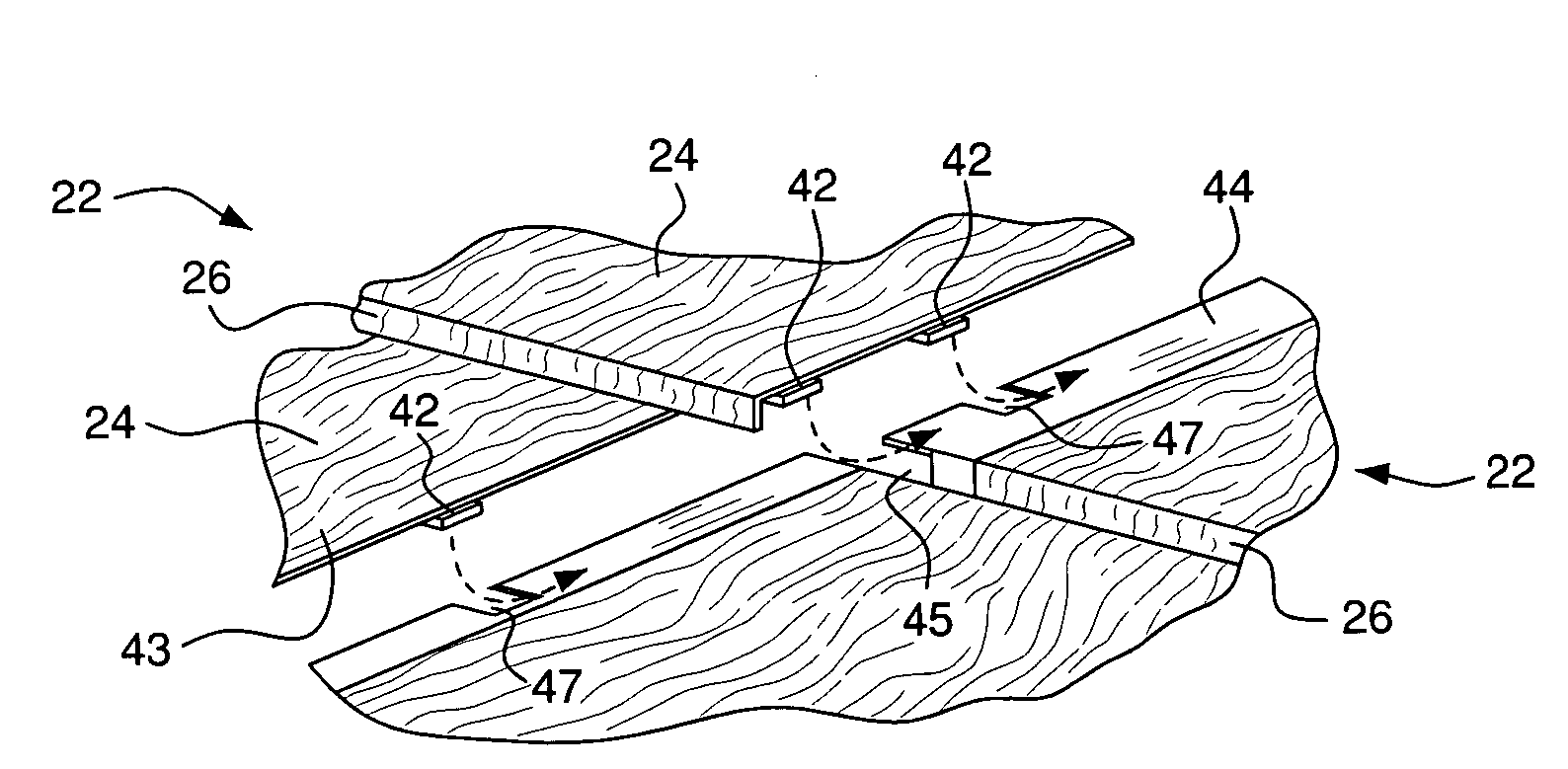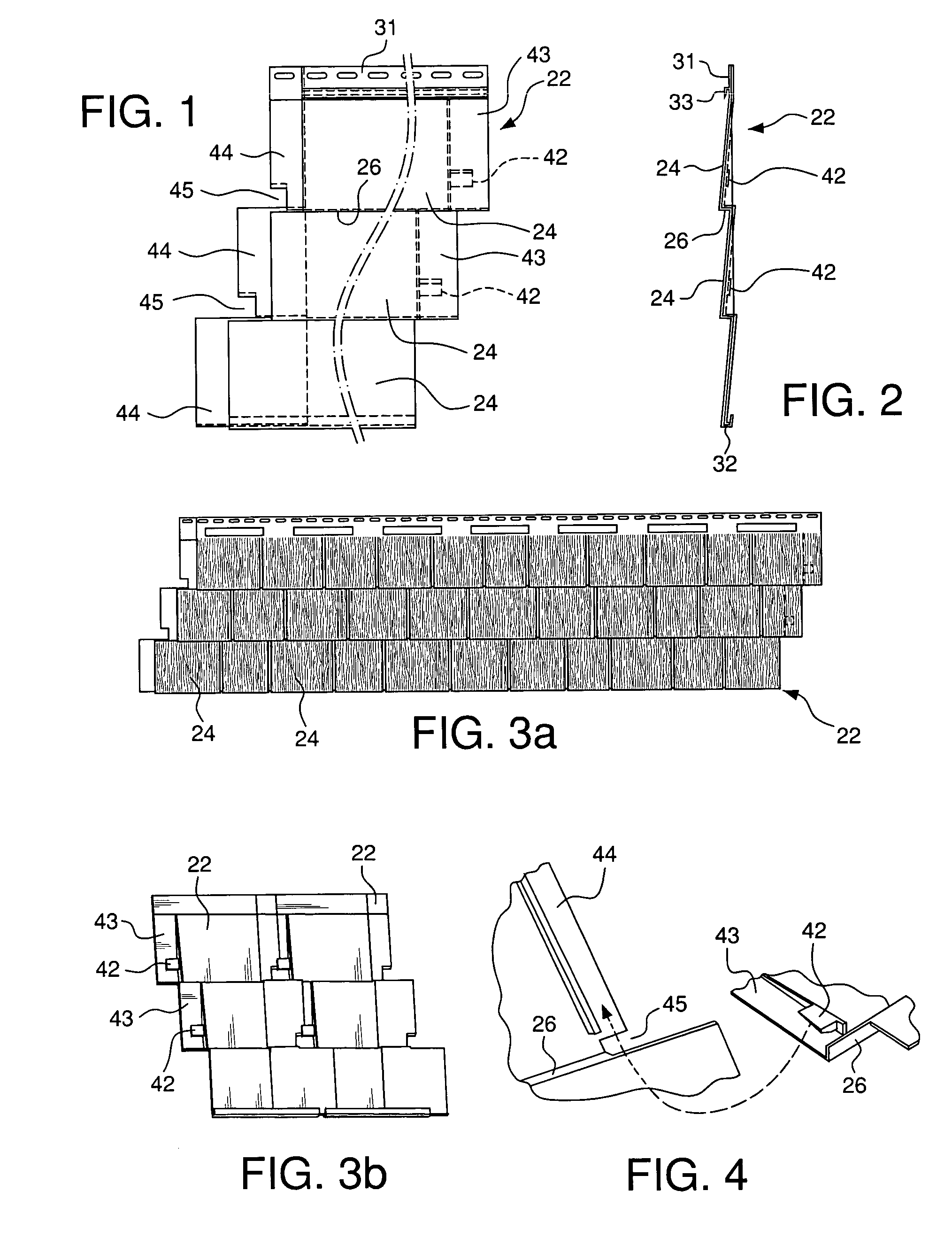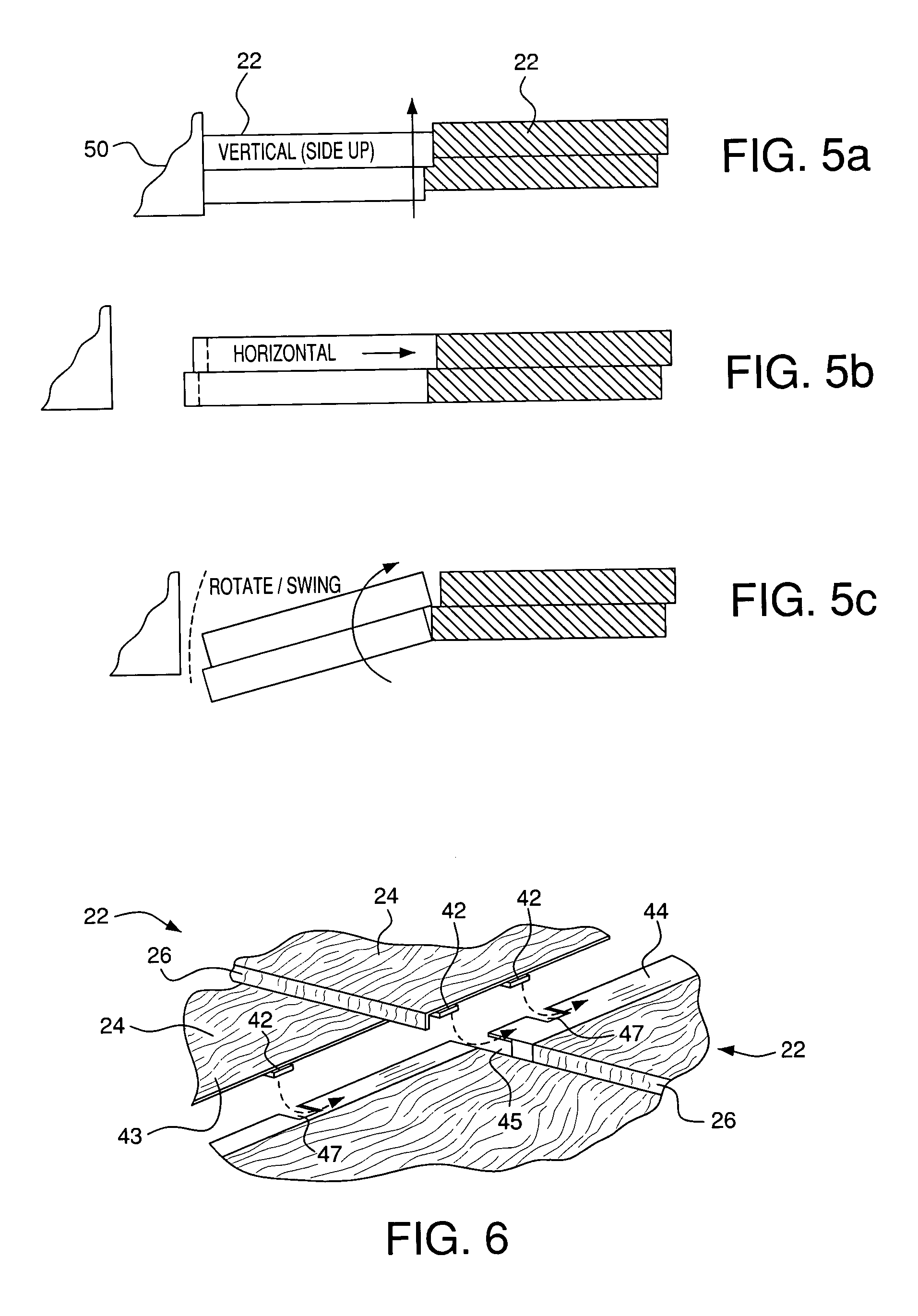Siding panel tab and slot joint
a technology of siding panels and slots, applied in the field of panels, can solve the problems of horizontal abutments, require joints, overlap joints, etc., and achieve the effects of facilitating insertion, and reducing the incidence of partial joint engagemen
- Summary
- Abstract
- Description
- Claims
- Application Information
AI Technical Summary
Benefits of technology
Problems solved by technology
Method used
Image
Examples
Embodiment Construction
[0048]A number of exemplary embodiments of the invention are described herein with reference to the drawings. These embodiments are examples intended to demonstrate aspects of the invention in different forms or separately. Not all the aspects are required in all embodiments of the invention, and the illustrated embodiments should be regarded as exemplary rather than limiting.
[0049]For example, the illustrative embodiments discussed concern building siding materials of the sort typically installed in horizontally elongated courses on external building surfaces that are vertical and flat. However, the nature of the installation surface and whether or not the courses are elongated horizontally, are subject to variation. For example, the surface could be sloping (such as a roof) or curved. The direction of elongation of the panels could be vertical or inclined instead of horizontal. The application could be an exterior or interior building application or an application that is not rela...
PUM
 Login to View More
Login to View More Abstract
Description
Claims
Application Information
 Login to View More
Login to View More - R&D
- Intellectual Property
- Life Sciences
- Materials
- Tech Scout
- Unparalleled Data Quality
- Higher Quality Content
- 60% Fewer Hallucinations
Browse by: Latest US Patents, China's latest patents, Technical Efficacy Thesaurus, Application Domain, Technology Topic, Popular Technical Reports.
© 2025 PatSnap. All rights reserved.Legal|Privacy policy|Modern Slavery Act Transparency Statement|Sitemap|About US| Contact US: help@patsnap.com



